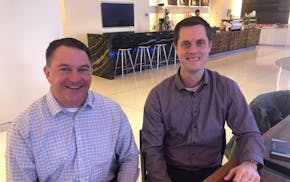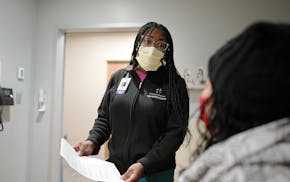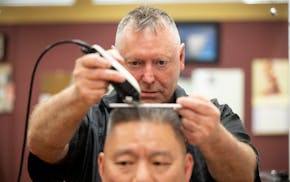Sara Sargent plans to launch Tuesday night on a 2,000-mile road trip to Santa Clara, Calif.
And this is going to be one pioneering trip with a very interesting twist for the three-member crew.
Sargent, 31, an electrical engineer and project manager at VSI Labs, will pilot an autonomous Ford Fusion hybrid, a vehicle guided by technology to drive itself.
Sargent, or a colleague, always will be in the driver seat, ready to take command at a moment's notice.
"Our goal is to discover areas that might work well, or not well, for map-based 'lane-keeping' and autonomous adaptive cruise-control systems that we are testing," Sargent said. "We've done some testing with this technology around the Twin Cities.
"However, the 'Automated Drive West' is about discovery. This trip will apply a few technologies that are particularly useful in rural settings where infrastructure is at a minimum."
VSI Labs aims to validate the benefit of using precision lane models and enhanced GPS technology to improve the performance and safety of highway autonomous driving applications.
Furthermore, the team seeks to better understand how these technologies operate across varying terrains, weather, and driving conditions.
VSI Labs is a St. Louis Park-based consulting firm that researches and tests self-driving technology.
The VSI team is supported by operating and financial partners Here Technologies, Oxford Technical Solutions and Informa Markets' Drive World Conference, to which they are headed.
The Automated Drive West team this week plans to drive four days to Santa Clara.
The team will participate in demonstration rides at Informa's Drive World Conference Aug 27-29.
Here provides VSI with so-called "HD Live Maps," which work with Oxford's tech to enable a map-based, lane-keeping app.
Oxford and Here have invested something in excess of $75,000 to have their products built into the test Fusion and sponsor the car.
Oxford makes a very precise GPS-type instrument that helps route the vehicle within a couple of centimeters of where its supposed to be.
Sargent, who will be feted at a reception before launch Tuesday by "Women Leading in Technology," is an interesting story herself.
Sargent attended community college and worked in retail-store management after graduating Richfield High School for several years before graduating in engineering from the University of St. Thomas.
She overcame a weak background in math, with the support of her husband and friends, and earned her degree because she was driven by a desire to "understand how things worked.
"I wasn't good in math in high school. I never thought I would be good at math in high school," Sargent said. "I was curious and liked to understand things worked. I went back to school with the support of my husband. He worked. We had a mortgage."
She and her husband, Ryan Sargent, a Hennepin County court administrator, will do most of the "driving."
Jacob Miller, is the flight engineer, so to speak. Miller, 21, is a computer-engineering student at the University of Minnesota and an intern at VSI. He will be busy monitoring systems and results of the test drive.
"This project so interesting because the majority of autonomous driving at the moment is either vision-based or relies on "Geo Fencing" that is mapped out in a small area," Miller said. "When you are crossing 2,000 miles of road there are a lot of issues, including 'distortion' from the spherical shape of earth as it is [translated] to a 2D map of the Earth. Over a 2,000-mile trip, the distortion is quite significant.''
If Miller sees the system diverting the car, the driver, who always has hands on the steering wheel, squeezes it. That's enough to disengage the autonomous system and allows the driver to pilot the car manually.
"I just [grip] tightly and that disengages the system,'' Sargent said. "We've been practicing on public roadways. It's worked fantastically.
"Ryan and I will do most of the driving so Jacob can monitor the computer system. This is a research vehicle. You need an engineer who can run the systems and check each sensor to make sure it is working properly. If Jacob sees the system get a little bit off, I'm there and take over the steering wheel, the driving. I keep my hands on the steering wheel. I want to feel the steering wheel movement.
"Being a 'safety driver' is not relaxing."
Sargent and Miller will present their preliminary results at the conference.
Sargent, who is excited about the trip after months of preparation, is no daredevil.
"I'm completely excited," she said. "But I'm a very risk-adverse person. Believe it or not.
" We have been working so hard. Trying to think of everything we need to do and have with us. Such as extra keyboard batteries. Air in the spare tire. We also need to get an oil change."

St. Anthony: 'Patient' investing paying off for St. Paul's Hill Capital

Jennifer Smith, leader of Burnsville's Innovative Office Solutions, has died

St. Anthony: Medical professions in Minnesota need more people of color in their ranks



